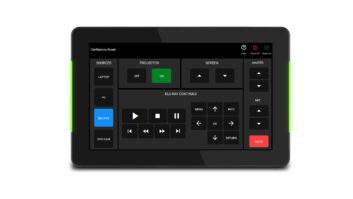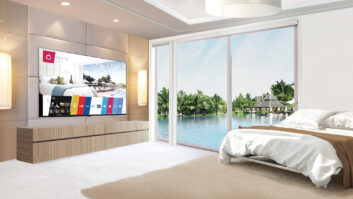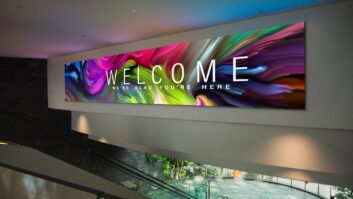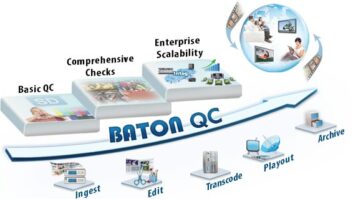RG Jones Sound Engineering has equipped the historic chapel at Cambridge’s Trinity College with its first sound reinforcement system, using 127 of JBL’s miniature Control 52 satellite speakers. The speakers are accessed via a sophisticated BSS Soundweb DSP design to optimise the sound broadcast from seven fixed mic positions at the lecterns.
RG Jones’ project manager Jeff Woodford, and installation manager Jon Berry, were tasked with implementing a design in a listed building under English Heritage restrictions. This called for the loudspeakers to be set discreetly on the shelving under the pews and the transformer distribution boxes to be similarly concealed.
Because the system was designed to handle gentle reinforcement rather than public address, sequential delay times were measured by Berry from each of the mic positions to each of the Chapel’s 14 speaker zones (based on seven mic positions feeding each of the North and South sides). Advanced programming ensured that the voice of the speaker or celebrant is heard first at the local position.
A further four zones cover the organ loft (where the equipment rack is situated), the ante-chapel, control screen position and altar.
The equipment was supplied by Sound Technology, Harman Pro’s UK and Republic of Ireland distributor. The company responded successfully to a system design created by acoustic consultant, Peter Mapp andAssociates, who drew up the tender document on behalf of property management consultant (and overall project manager) Bidwells.
A total of 41 BrightSign solid-state controllers were used to deliver an exciting multimedia experience for the massive Abu Dhabi city model and three other related models at the recent Cityscape Abu Dhabi 2010 exhibition.
Measuring 23m x 17m, the Abu Dhabi model uses 20 synchronised BrightSign media players to illustrate the government Urban Planning Council’s vision of what the capital of the United Arab Emirates will look like in 2030.
At a scale of 1:2000 to show significant details of existing landmarks, standard resolution images spread over such a large area would have looked extremely pixilated, so ultra-high resolution movie masters were created. The footage was then subdivided into 16 1024 x 768 pixel rectangles delivered to 16 ceiling-mounted projectors by 16 separate BrightSign HD210 media players running in sync.
Three more BrightSign HD210 players provided the video images for the custom-made, 36 foot screen at one end of the model, and a BrightSign HD1010 player delivered the sound tracks in English and Arabic and was designated as the master to the other players which were synchronised.
Designed and installed by London-based visual communication specialist GHA Group, the technology for the displays that bring the model to life was the culmination of more than two years of development work.
www.brightsign.biz
www.ghagroup.co.uk
A large-scale digital display at New Zealand’s Wellington International Airport is being used to by telecoms giant Chorus to promote its “fibre-to-the-cabinet” programme. The initiative aims to deliver high speed broadband to more than 80% of New Zealanders by the end of next year.
An installation comprising white on white router cut layers was designed by Creature and integrated with video content displayed on a bank of digital screens. The objective of the display was to reinforce the message that the network expansion was real and happening now in numerous communities.
ONELAN’s Net-Top-Boxes (NTBs) were chosen as the digital signage content management solution for the content and display options available, as well as the instant messaging and scheduling capabilities.
One ONELAN NTB5005 has been installed displaying content to 12 Orion MPDP seamless panels, configured in a 4 x 3 4m wide video wall. The ONELAN unit turns the power on/off, schedules and runs content, tells the MPDP to display the image across twelve panels, and can be updated remotely across a network.
When ICMoving set forth on a mission to become the first outdoor digital network providing information and entertainment to the public in Italian airports, the company knew it would change the television experience. The new ICMoving TV Network is an infotainment platform that broadcasts general information, advertising, entertainment and services throughout six major airports in Italy.
Working with Scala Certified Partner M-Cube, ICMoving launched the TV network, which spans 170 high-definition LCD displays in high-traffic airport locations. ICMoving uses Scala 5 software to manage all content that is driven to the screens. Through this set-up, the company can carry out its vision: Interacting with a large audience in various airports and enhancing the airport customer’s experience by broadcasting the highest level of information and entertainment.
The main benefit of the new Scala-based system is that ICMoving Channel can now guarantee much higher stability compared to the old network. In addition, the time needed to update content is significantly lower than before, and the system is much more user friendly. Most importantly, airport visitors no longer see the screens as traditional televisions, but as a modern and valuable infotainment platform.
The ICMoving TV network is now broadcasting at the Roma Fiumicino, Milano Malpensa, Milano Linate, Bergamo Orio Al Serio, Venezia Marco Polo and Treviso Canova airports.







